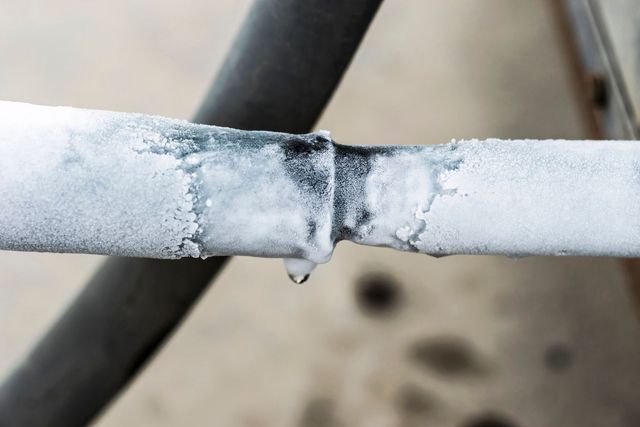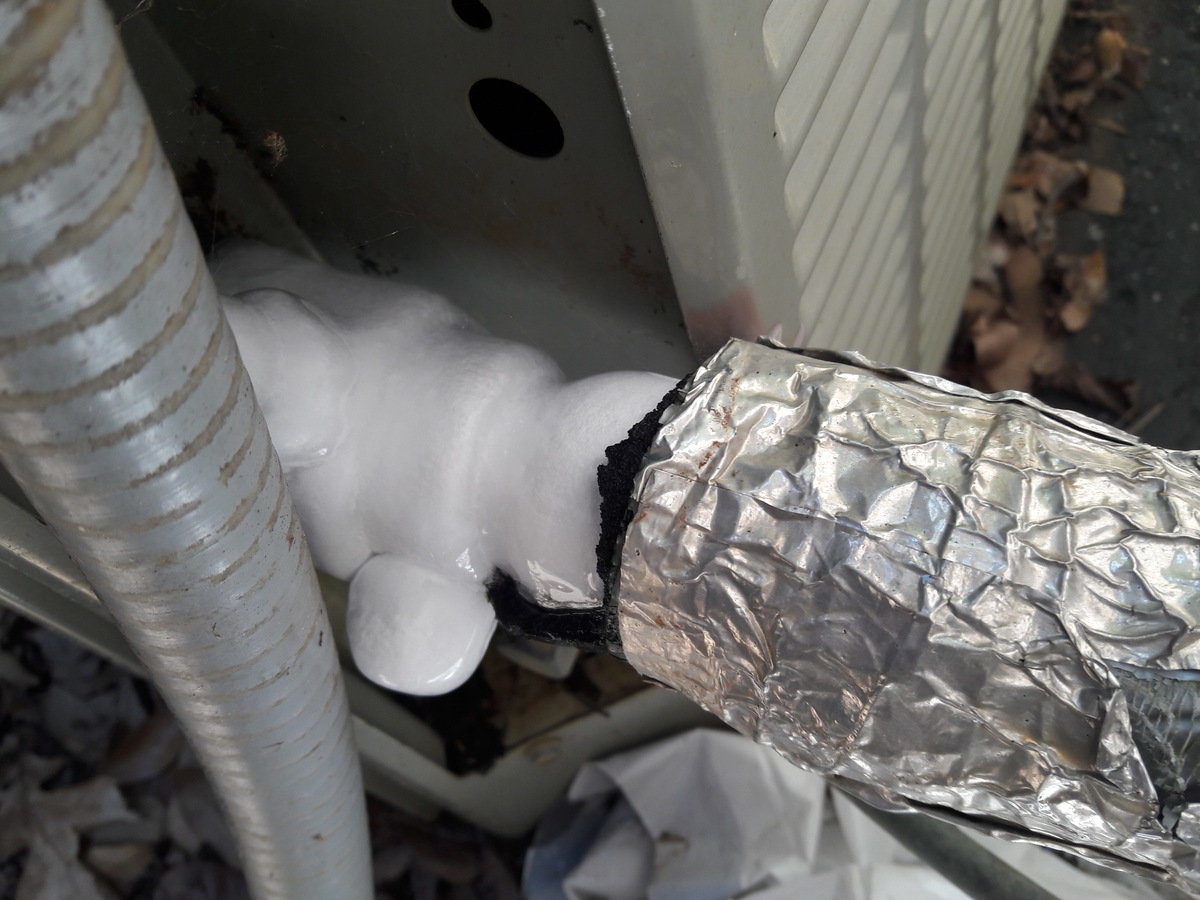How to Handle a Frozen AC Pipe: Comprehensive Handbook
How to Handle a Frozen AC Pipe: Comprehensive Handbook
Blog Article
On this page in the next paragraph you can locate more high-quality ideas all about What Causes AC Pipes To Freeze?.

Introduction
Discovering that your air conditioner pipeline is frozen can be concerning, specifically throughout hot summertime when you count on your air conditioner one of the most. Understanding what to do in such a scenario is vital to avoid more damages to your cooling system and guarantee your convenience inside your home.
Understanding the Causes
Several factors can contribute to the freezing of an air conditioning pipeline. Recognizing these reasons can help you address the issue efficiently.
Lack of Airflow
One typical reason for a frozen air conditioning pipe is inadequate airflow. When the airflow over the evaporator coil is limited, it can create the coil to drop below freezing temperature, leading to ice development on the pipeline.
Low Refrigerant Levels
Insufficient cooling agent levels in your AC system can additionally lead to a frozen pipeline. Low cooling agent levels can create the pressure in the system to go down, resulting in the cold of wetness on the evaporator coil.
Winter Conditions
In chillier environments, freezing temperatures outside can add to the cold of air conditioning pipelines. If your AC system is not effectively insulated or if there are leakages in the ductwork, cool air can infiltrate the system, causing the pipe to ice up.
Dirty Air Filters
Unclean or clogged air filters can restrict air flow in your a/c system, causing numerous concerns, consisting of an icy pipe. It's important to replace or cleanse your air filters regularly to guarantee proper air flow and protect against ice buildup.
Indications of a Frozen A/c Pipe
Identifying the indicators of an icy AC pipeline is crucial for punctual action.
Reduced Airflow
If you see a considerable decrease in air movement from your vents, it could show a frozen pipeline.
Ice Buildup on the Pipe
Visible ice build-up on the refrigerant line or the evaporator coil is a clear sign of a frozen a/c pipe.
Odd Sounds from the Unit
Uncommon sounds, such as hissing or gurgling, originating from your air conditioning system can signify that there's ice present on the pipe.
Immediate Actions to Take
When confronted with an icy AC pipe, it's necessary to act promptly to stop further damage to your cooling system.
Turning off the air conditioning
The primary step is to shut off your air conditioning unit to prevent the system from running and exacerbating the issue.
Looking for Blockages
Evaluate the location around the indoor system for any kind of blockages that might be blocking airflow, such as furnishings or drapes.
Thawing the Pipe
You can make use of mild methods like positioning towels soaked in warm water around the frozen pipeline to assist thaw it slowly.
Safety nets
Taking safety nets can assist prevent future incidents of a frozen AC pipeline.
When DIY Methods Fail
If your attempts to thaw the pipeline or address other problems are not successful, it's time to employ a professional.
Value of Hiring a Professional HVAC Technician
A qualified HVAC specialist has the expertise and tools needed to detect and fix concerns with your AC system safely and successfully.
Routine Maintenance Checks
Set up normal upkeep get in touch with a professional HVAC technician to ensure that your AC system is running efficiently.
Transforming Air Filters
Consistently change or clean your air filters to prevent airflow constraints and preserve optimal efficiency.
Protecting Exposed Pipes
If your air conditioning pipelines are subjected to cold temperature levels, consider shielding them to avoid cold during cold weather.
Seeking Professional Help
If DIY approaches fail to settle the issue or if you're not sure about exactly how to continue, it's best to seek help from a certified HVAC specialist.
Final thought
Managing a frozen air conditioning pipe can be an irritating experience, yet knowing just how to react can help decrease damages and restore comfort to your home. By recognizing the causes, recognizing the indicators, and taking prompt action, you can efficiently resolve the issue and prevent future events.
Frozen AC Line: Why It Happens & What To Do About It
A frozen AC line can be a rather peculiar sight in a place like Phoenix, Arizona where nothing ever freezes. In this post, we’ll discuss what makes an air conditioner line frozen – and what you can do about it.
Dirty Air Filters
Did you know that you should be cleaning or replacing your air filters on a monthly basis? Failing to do this can result in airflow issues that, in turn, cause your evaporator coils and lines to freeze over. You’ll notice a buildup of ice on both components, although the buildup on your pipes will, of course, be more evident unless you open your air condition up to reveal the coils.
What To Do About It
Give your air filter a good cleaning if it’s reusable. If not, replace the filter outright. Next, switch your air conditioner’s fan setting on and leave it there for 2-3 hours. This will draw warm air in, helping to thaw your evaporator coil. You can also check out this article for some tips on cleaning the coils themselves if you’d like to speed the process up. Before you switch the unit back to its normal state, make sure the supply vents are completely unobstructed and free of dust or other debris.
If you keep having this issue even after replacing your filters regularly, contact a local HVAC repair company and have them inspect your evaporator coil, ductwork, and any other components that may be at fault. If you live in the Phoenix, Arizona area, give American Home Water and Air a call.
Low Refrigerant Levels/Leakage
What To Do About It
Contrary to what air conditioner “recharge” companies often tell their clients about refrigerant, it should never need to be simply refilled. You see, refrigerant runs in what experts refer to as a “closed loop.” Refrigerant really shouldn’t be leaving that loop. If it is, you’ve got a leak.
Paying someone to come and pump more refrigerant into your system (aka “recharge” it) isn’t the solution. Doing that will simply kick the can down the road. Besides, refrigerant leaks can be harmful to the environment and people in your home.
Rather, you need to take care of the leak with the help of a technician. Check out this article for some more information about dealing with air conditioners that are leaking refrigerant. Before you contact a technician, switch your thermostat to the off position. Then, switch the fan setting on and let it run for 2-3 hours so the unit can thaw.
Improper Temperature Setting
Improper temperature settings can also cause a drop in your air conditioner’s pressure. What many people don’t realize is that air conditioners are actually designed to run when temperatures have fallen above roughly 60 degrees Fahrenheit. If you run the unit when it’s cold outside, you’ll run into many issues, including frozen components.

I stumbled upon that blog post on Why Is Ice On My Outside Air Conditione when doing a lookup on the search engines. Sharing is nice. Helping others is fun. Thank you so much for going through it.
Estimate Free Report this page